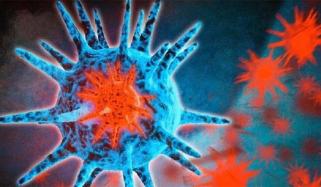
A new finding has come to the world of cancer research and it offers more insight into the infamous zombie cells that Science Daily claims, “have existed in the human body as a seeming paradox, causing inflammation and promoting diseases while also helping the immune system to heal wounds.”
This study, coming straight from researchers at Johns Hopkins University talks about three subtypes of ‘senescent’ skin cells they have identified.
It is pertinent to mention that the act of senescence is ‘the process of growing old’ and in biology refers to the process by which cells age, stop dividing but do not die.
It was previously thought that these are the cells that cause tumors and cancer.
Senescent cells have “distinct shapes, biomarkers, and functions -- an advance that could equip scientists with the ability to target and kill the harmful types while leaving the helpful ones intact.”
As per Science Advances, an open-access peer-reviewed journal established in 2015, in senescent cells “the cell could go down one of three different paths, each leading to a slightly different subtype.”
According to assistant professor of biomedical engineering at Johns Hopkins University, Jude Phillip, “we've known that senescent skin cells are different from senescent immune cells or senescent muscle cells. But within a cell type, senescent cells are often considered the same -- in essence, skin cells are either senescent or not, for example.”
Now “we're finding that when a skin cell goes into senescence, or a zombie-like state, the cell could go down one of three different paths, each leading to a slightly different subtype.”
And “with our new findings, we have the tools ready to develop new drugs or therapies that preferentially target the senescence subtype that drives inflammation and disease as soon as it is identified.”
All in all Mr Phillip added, “We hope, with some more development, our technology will be used to help predict which drugs might work well for targeting senescent cells that contribute to specific diseases.”
And “Eventually, the dream is to be able to provide more information in a clinical setting to help with individual diagnoses and boost health outcomes."
The Research
This NIH-funded project for the Baltimore Longitudinal Study, compared samples from 50 healthy donors who were between the ages of 20-90.
In it, they used a mix of healthy/nonsenescent and senescent fibroblasts, as well as special dyes to capture images.
Fibroblasts are the most common cell type in connective tissue for those unversed.
A new machine learning and imaging technology was used to measure the 87 different physical characteristics of each cell, which then sorted the fibroblasts into their own groups.
With this approach, the researchers learned that there are 11 different shapes and sizes to these cells, three of them are distinct to senescent skin cells and only one, named C10, was more prevalent in older donors.
This led them to expose those same cells to existing drug regimens for zombie cells, and the researchers found that there was ‘limited’ success in killing the C10 senescent fibroblasts.
The Problem
The issue with some chemotherapy regimens is that they trigger senescence inside cancer cells, and this replication leads to the formation of “dead-in-the-water zombie cells”.
Thus, despite the fact that these therapies do stop tumor growth, they end up leaving senescent cells. Whereas Conventional treatments push fibroblasts towards the same as well.
In the end, this buildup turns problematic, as some of those cells may cause inflammation in times when the patient is already immunocompromised.
The only way to wash away the cells in this case is with senotherapeutic drugs which clear these senescent cells.















